We tried the VR mode of F1 22 thoroughly and were impressed: it is an exhilarating way to experience the new Codemasters racing game.
One of the most important new features of F1 22 (here our F1 22 review) is the possibility, for those who play from PC, to enjoy virtual reality support. For this new edition of its course, Codemasters wanted to focus strongly on this feature, offering not a simple dedicated mode but the possibility of using the complete package in VR.
From time trials, to single races, up to Pirelli Hot Laps aboard supercars and multiplayer, it is possible to live the entire play experience with the helmet on, without limitations. Let’s start by listing the viewers with which the racing game is compatible: let’s talk about Valve Index, Oculus Quest 2, Oculus Rift S, HTC Vive and HTC Vive Cosmos. We have played it for a long time with a Quest 2 and in this special we tell you about our experience in virtual reality with F1 22.
Adjust the seat, adjust the mirrors
The first impact with the box leaves you speechless and immediately gives an idea of how different the VR experience is. The instinct comes to look around, to see what is outside the cockpit and to meet the gaze of the mechanics, all around the car, intent on making the final touches to the racing car before starting it. The awareness that determines the difference between the traditional mode and that in virtual reality comes when you discover it in the latter to be able to move inside the car.

You can therefore literally sit in your chair to have a lower and more sporty driving position, or, alternatively, you can keep your back more erect to get a point of view that allows you to keep a good part of the nose under control. car. It is then necessary to check that, based on the chosen posture, it is also possible to have a rear view through the mirrors.
In short, it is a bit like when you sit at the wheel of a car for the first time, only here, not being able to adjust the seat height, we have to help ourselves with the positioning of the body. Once these preliminary operations have been carried out (which after a few hours become automatic), you get on the track, not before having launched one last amazed look at our garage.
Look at the steering wheel
Codemasters developers are well aware that players who try their hand at the track with their headset are looking for extreme realism, therefore, by default, the game HUD has been removed almost completely. Our only point of contact with everything that happens outside the cockpit is none other than the track engineer, who finally takes on the same importance in the game as it does in reality.

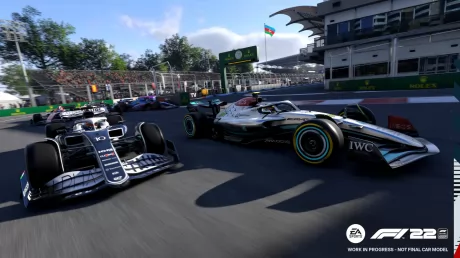

In fact, the player will have to interface with him to keep track of his position, the gaps, any penalties, yellow flags or whatever else happens in the circuit. For everything related to our performance in real time instead the steering wheel comes to our aid, the display shows important information such as speed, gear engaged, tachometer, DRS status and so on. All information that was already present in previous editions, but which in VR become absolutely fundamental given the absence of the interface. The budding rider will therefore have to get used to it to often look at the steering wheel while driving and this will force him to take his eyes off the track from time to time. At the same time it will be necessary to interact with the engineer more frequently than it used to be when playing on a traditional screen and you will have to pay close attention to the rear-view mirrors, especially when defending yourself from an opponent’s attack. All these precautions at the beginning almost constitute distractions that complicate driving but as the laps go by everything becomes more natural.
However, acquiring these automatisms does not make the gesture less satisfying, which returns that dose of realism that would be impossible without the viewer. For those who want a more relaxed experience there is however the possibility to enable the classic HUD from the options menu and to customize it completely, by going to choose what to display on the screen.
A whole new way to stay on the track
In virtual reality, the way of being on the track changes significantly. First of all, there is a different perception of the spaces and the sense of speed returned is insane. The possibility of moving the view by rotating the neck opens the way for a deeper driving style: the curves, for example, are set a few moments in advance, turning the head to look first for the chord point and then the external curb. Speaking of curbs then, with the viewer you perceive much more the vibrations they produce and climbing too much above this part of the track means receiving a nice “jolt” to the view that can be disorienting for a few fractions of a second.


As for the halo, in the internal view of the traditional experience the protection bar is actually annoying because it is placed right in the center of the visual cone, so much so that Codemasters had immediately added an option to allow the player to remove it. In virtual reality, however, this support bar is no longer a problem because just move your head slightly left or right to be able to see beyond. However, it remains possible to remove it also in this second case but honestly it did not seem necessary. Ultimately we can say that VR has given F1 22 an additional dimension of realism: the physical one.
With a pinch of imagination, even the enveloping shape of the helmet and the inevitable sweating that causes prolonged contact with the skin, can give the sensation of wearing a full-face helmet, so as to make fans feel like real pilots.
Weather and supercars
Another great protagonist of the virtual reality game is the weather. We know how much weather conditions affect the behavior and handling of cars on the track but this is not what we are referring to. Driving in the middle of the afternoon, making a curve and suddenly find the sun in your faceit can create some problems in VR mode.
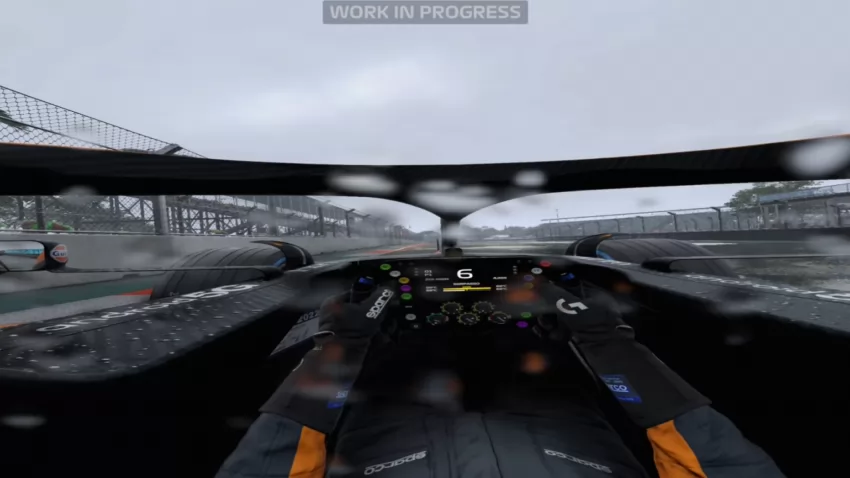
Likewise, finding yourself behind the wheel in the pouring rain can be as complicated as it is astonishing and the reason is soon said. Visibility is reduced to a minimum, especially when one is in the wake of another car and often the only reference in these cases becomes one’s own the red warning light of the car in front.
However, these are also the conditions in which the game becomes really beautiful to look at, between the drops that flow on the bodywork, the reflections of the puddles on the asphalt and the water raised and sprayed by the passage of the cars. Another of the big news of F1 22 is the introduction of supercars. Obviously, these racing cars can also be driven in VR, both in the classic time trials and in the Pirelli Hot Lapspecial challenges designed specifically for the new car category.

Well, here the work carried out on the interiors seemed to us rather fluctuating: being able to observe them closely thanks to the helmet, some models seemed excellent, reproduced with fidelity and great detail, while others were made somewhat crudely. Overall, however, both because of the difficulty of sculpting the minutiae of a car of this type, and because it is still an outline content, we were satisfied with the results achieved by Codemasters.
Technical sector
In order for a virtual reality experience to be enjoyable, a good optimization on the technical front is needed, especially to avoid players from some unpleasant episodes of motion sickness. Sensitivity to this type of disorder varies from individual to individual but in general Codemasters has done an exceptional job in this area.

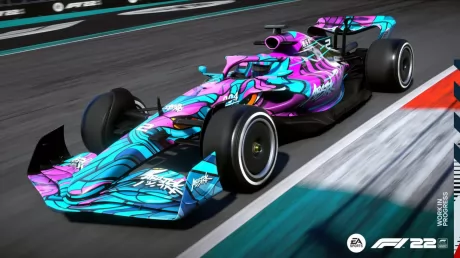
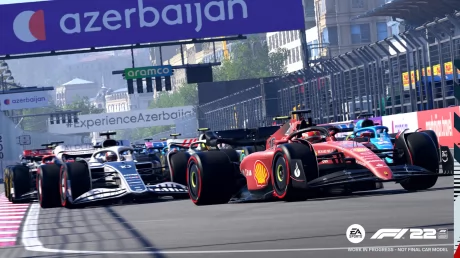
For a game that has to return a great sense of speed it is important be able to maintain a high and above all stable framerate. Our test took place on a configuration equipped with an RTX 3080 Ti video card and AMD Ryzen 9 5950x processor and we were able to enjoy the experience with ultra graphics settings and a frame response around 50 fps, even in more complicated conditions. handle (such as racing in pouring rain). Obviously, decreasing the visual detail earns precious frames per second and, in our opinion, it is always preferable favor fluidity when playing in VR. Still on the subject of optimization, but this time leaving the helmet experience for a moment, we must say that the game offers solid performance even on a monitor. Enabling the F1 22 ray tracing becomes even more beautiful to see, especially in night races or in those in the rain, where the metallic bodies of some teams offer a whirlwind of reflections.
Clearly this advanced visual solution weighs a lot on the frame rate but with our configuration, always with ultra settings and ray tracing activated, the action remained stable between 45 and 50 fps, and then splashed close to 200 frames per second. once the lighting technique is “turned off”. In any case F1 22 is not an excessively onerous title in terms of requirements and at medium settings it is easily within reach even of older configurations.
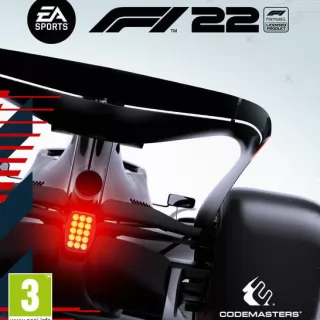
F1 22PC Analyzed VersionF1 22 in virtual reality takes the simulation of Codemasters to another level, offering immersion never before achieved in the series. Certainly a bit of practice is required for the player to become familiar with the races in VR, since the challenge becomes more a bit more demanding, even on a physical level, but the satisfaction that is felt by literally darting in the 22 official circuits is remarkable. aboard the single-seaters. And if you are equipped with a steering wheel and pedals and maybe even a nice station, then the fun is guaranteed.














